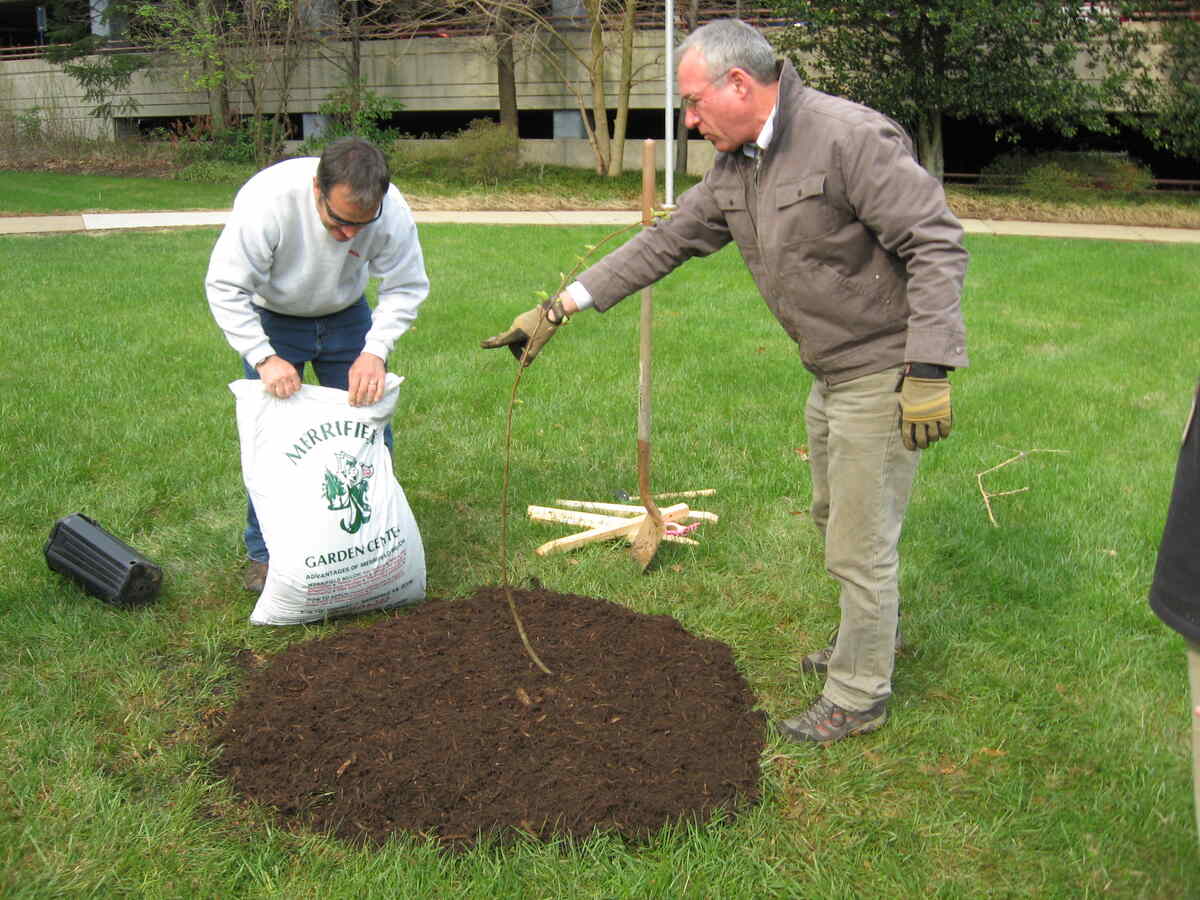
Perfect mulching starts with the right amount of material. Instead of eyeballing your order and ending up with lots of unused bags or, worse, running short, find out exactly how much mulch you need.
Use our mulch calculator or do the math yourself and multiply the square footage with the mulch depth to learn how many cubic feet you need. We take you through all the steps for both methods.
Why a Proper Mulch Calculator Matters
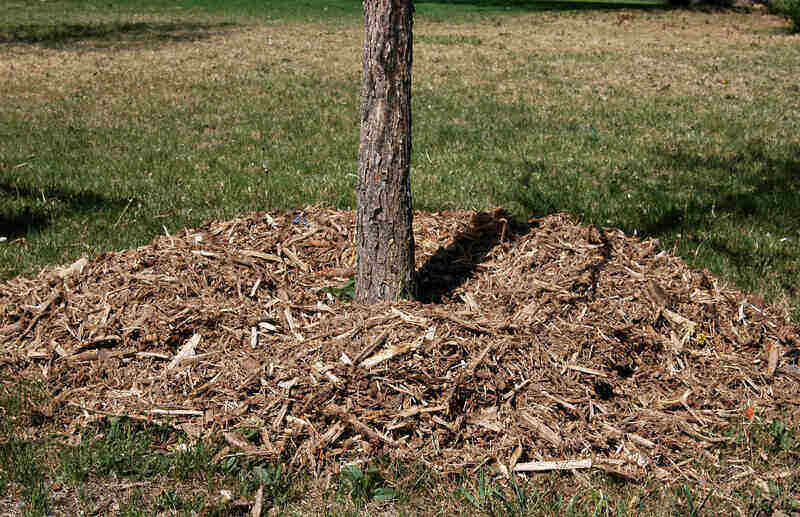

It always starts with a simple question, ”How much mulch do I need?” and can continue with headaches and frustration if you do the math by hand or a few seconds of typing if you use a mulch calculator.
A good mulch calculator saves you time and money. It quickly calculates how much mulch you need and prevents you from overbuying or buying too little and making additional trips to the store.
For example, let’s say you wonder, “How much rubber mulch do I need for my pathway?” which is a rectangular area of 6 feet x 2 feet you’ll cover with a 1.5-inch layer of mulch.
To find your answer with the mulch calculator below, follow these simple steps:
- Step 1: In the “Select Shape” section, select “Rectangular.”
- Step 2: Add 6 in the “Length” box and 2 in the “Width” box.
- Step 3: Select “Custom” in “Mulch Depth,” and add 1.5 in the box below.
- Step 4: Choose the “Type of Mulch” (e.g., “Wood Chips”).
- Step 5: Select the “Price Unit” and add the price per unit in the “Mulch Price” section. If you buy bags, add the bag size (e.g., 1.5 cu. ft.) and the price per bag (e.g., $2).
- Step 6: Click “Calculate.”
- Step 7: Print the results and take them with you.
Quick Mulching Tips
DON’T
- ❌ Pile mulch against tree trunks. This can cause bark rot and invite pests.
- ❌ Pile mulch against your house foundation
- ❌ Till carbon-rich mulch (e.g. sawdust) into the soil, it can tie up nitrogen.
DO
- ✓ Remove weeds before applying mulch
- ✓ Keep mulch 2-3 inches away from plant stems and 3-4 inches away from tree trunks
- ✓ Refresh mulch when it starts to decompose, usually annually.
See Related:
Note: There’s a faster way — if you don’t have time for mulching, hire a landscaping professional to take care of the entire process.
Understanding Mulch Measurements: Cubic Feet to Yards
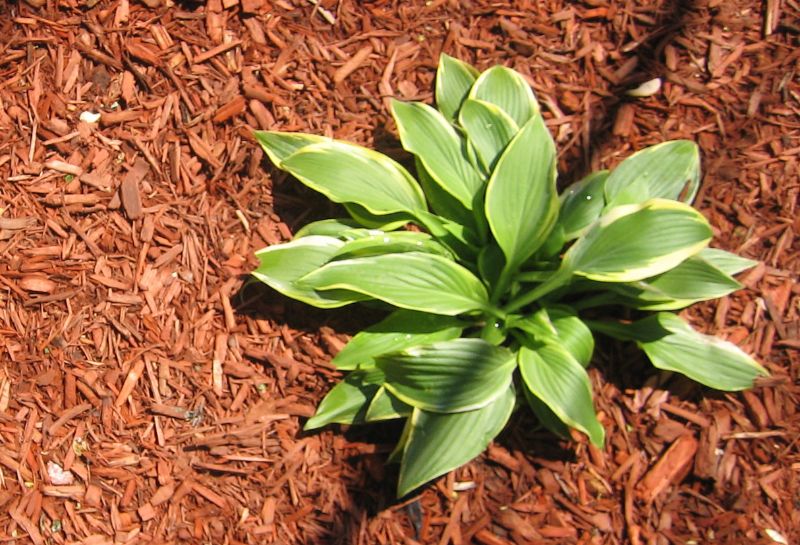

Cubic feet and cubic yards are two measurements of volume used for mulch: Bulk mulch is measured in cubic yards and bagged mulch in cubic feet.
Knowing how many cubic feet are in a cubic yard of mulch helps you compare bulk and bagged mulch prices.
How much is a cubic yard? A cubic yard is a cube with 3-foot sides, so it’s equal to 27 cubic feet:
| 1 cubic yard = 27 cubic feet |
Here’s how you use this information to convert cubic feet to yards and vice versa:
| Cubic Feet ⇨ Cubic Yards | |
| How: Divide cubic feet by 27. Formula: Cubic yards = Cubic feet / 27 |
Example: 100 cubic feet / 27 = 3.70 cubic yards |
| Cubic Yards ⇨ Cubic Feet | |
| How: Multiply the volume by 27. Formula: Cubic feet = Cubic yards x 27 |
Example: 8 cubic yards x 27 = 216 cubic feet |
Bulk Mulch
The bulk mulch in garden stores, landfills, and recycling centers is measured in cubic yards.
It’s about 35% cheaper than bagged mulch and the most affordable option for projects over 200 square feet. How much is 1 cubic yard of mulch (labor not included)? For most types of mulch, roughly $20 to $180 depending on the type of mulch.
Bagged Mulch
Bagged mulch is measured in cubic feet and is available in bags from 0.8 cu. ft. to 2.5 cu. ft. It’s easier to transport home and a good option for small garden beds.
For average-sized gardens you can buy bulk or bag, and it helps to know how many bags of mulch are in a yard. The chart below refers to the most common bag sizes.
| Mulch Bag Volume | Number of Bags of Mulch in a Cubic Yard |
| 0.8 cu. ft. | 34 (33.75) |
| 1 cu. ft. | 27 |
| 1.5 cu. ft. | 18 |
| 2 cu. ft. | 13.5 |
| 2.5 cu. ft. | 10.8 |
Simple Steps to Calculate How Much Mulch You’ll Need
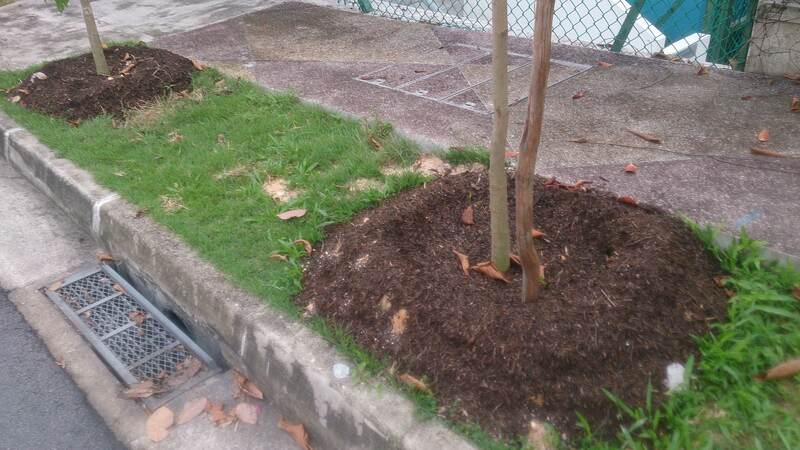

Follow these steps to calculate the necessary amount of mulch manually or ensure you input the right numbers in the mulch calculator.
Step 1: Measure Your Space
You can measure the square footage you plan to mulch with:
- A smartphone app like MeasureKit
- A measuring tape
- Your stride length (walk the distance and count your strides). The average stride length for women is 2.2 feet, and for men, it is 2.5 feet.
If you plan to mulch several different zones, use a pen and paper to note the individual dimensions.
Input the values into the mulch calculator above, or use the formulas in the chart below to calculate the areas.
Area = Length (feet) x Width (feet)
To calculate the area of a rectangular garden bed, multiply its length by its width.
Example
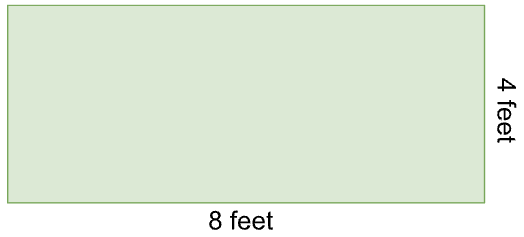

Area = 8 feet x 4 feet = 32 square feet
Calculate the area of the large rectangle by multiplying its length by width. Then, do the same with the small rectangle. To determine the area of the rectangular border, subtract the area of the small rectangle from the area of the large rectangle.
Example:
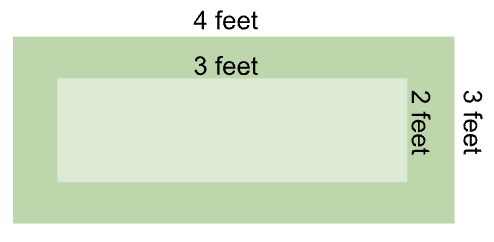

- Large rectangle area = 4 feet x 3 feet = 12 square feet
- Small rectangle area = 3 feet x 2 feet = 6 feet
- Rectangle border area = 12 square feet – 6 square feet = 6 square feet
Area = Pi x Radius2
Where Pi = 3.14 and the radius is half the circle width.
To find out the area of the circle, square its radius and multiply the result by Pi.
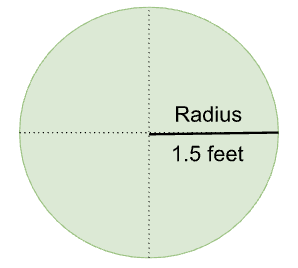

Area = 3.14 x 1.5 feet2 = 10.60 square feet
To calculate the circular border area:
- Calculate the area of the large circle
- Calculate the area of the small circle
- Subtract the area of the small circle from the area of the large circle.
Area = Pi x Radius2
Where Pi = 3.14 and the radius is half the circle width.
Example:
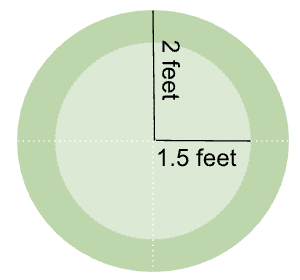

Large circle area = 3.14 x 2 feet2 = 12.56 square feet
Small circle area = 3.14 x 1.5 feet2 = 7.07 square feet
Border area = 12.56 – 7.07 = 5.49 square feet
Area = (Base x Height ) / 2
To calculate the triangle’s area, multiply the base (longest side) with the height (perpendicular to the opposite angle) and divide by two.
Example:
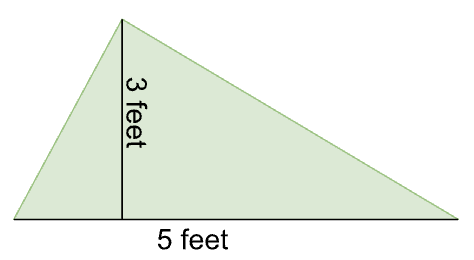

Area = (5 feet x 3 feet) / 2 = 7.5 square feet
Area = C2 / 4 x Pi
C is the measured perimeter (or circumference), and Pi is 3.14
Use the string method and estimate the treat the perimeter as a circle’s circumference:
– Take a long rope and lay it along the entire perimeter.
– Follow each corner and curve exactly, and mark or cut it where it completes the outline. To find out the area, treat it like a circle and use this formula.
– To find the area, the perimeter squared is divided by the product of 4 and Pi.
Example:
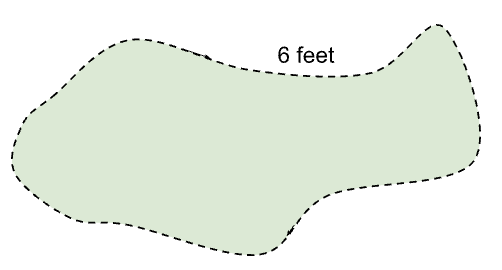

Area = 6 feet2/(4*3.14) = 2.9 square feet
Step 2: Determine the Right Mulch Depth
Mulch moderates soil temperature, saves water, controls weeds, enriches the soil, and protects vegetables from diseases. But it can also lead to root rot if applied too thick.
Depth matters, so choose it carefully.
This chart provides the recommended mulch depth for some common gardening situations.
| Location | Mulch Depth |
| New beds | 2 to 4 inches |
| Existing beds (refreshing mulch) | 1 to 2 inches |
| Around shrubs | 2 to 3 inches |
| Around trees | 3 to 4 inches |
| Vegetable gardens | 1 to 2 inches |
Learn more about choosing the right mulch depth by the type of plants, soil, and mulch material from our guide: How Deep Should Much Be?
See Related:
Step 3: Calculate Your Mulch Needs
Since you know the area and the depth, you can calculate the volume of mulch you need.
- Convert the mulch depth from inches to feet (divide it by 12).
- Multiply the square footage by the mulch depth.
| Mulch volume = Area (square feet) x (Depth (inches)/12) |
Example: To cover a 200 square feet area with a layer of mulch that is 2 inches thick, you need 34 cubic feet.
| Area = 200 square feet Depth = 2 inches Mulch volume = 200 sq. ft. x (2 inches / 12) = 34 cu. ft. |
|
| Convert into cubic yards (bulk mulch) 34 cu. ft. / 27 = 1.26 cu. yd. |
Convert into 2 cubic feet bags of mulch 34 cu. ft. / 2 = 17 2 cu. ft. bags |
| Calculate cost | |
| 1.26 x $43 per cu. yd. = $54.18 | 17 bags x $3.67 per bag = $62.39 |
As you can imagine, a change in mulch depth can quickly increase or decrease the amount of mulch you need.
You can see in the chart below what happens if you make the layer 1 inch thicker or thinner for a 200-square-foot area.
| Mulch Depth (Inches) | Cubic Feet | Cubic Yards of Bulk Mulch | Mulch Bags (Rounded Up) |
| 1 | 16.7 | 0.62 | 2 cu. ft. bags: 9 |
| 2 | 33.4 | 1.24 | 2 cu. ft. bags: 17 |
| 3 | 50 | 1.85 | 2 cu. ft. bags: 25 |
| 4 | 66.7 | 2.47 | 2 cu. ft. bags: 34 |
How much mulch do you need per square foot? It depends on the mulch depth.
- 1 inch deep: 0.08 cu. ft.
- 2 inches deep: 0.17 cu. ft.
- 3 inches deep: 0.25 cu. ft.
- 4 inches deep: 0.33 cu. ft.
- 6 inches deep: 0.5 cu. ft.
Pro Tip: Buy 5% to 10% over what your calculations tell you to be sure you have enough.
Common Mistakes to Avoid When Calculating Mulch
- Not considering existing mulch: Coarse, chunky mulches like wood chips and bark nuggets decompose slower, so you often need to replenish the layer only partially.
- Different types of mulch and compaction: Finer mulch, like straw, hay, and shredded bark, compacts more easily. According to the Natural Resources Conservation Service, you’ll need to apply about 6 inches of straw to end up with a 2-inch layer after settling.
- Not accounting for plants: If you have flowers filling the flower bed, you might only need (or be able to) add mulch on a narrow segment around the border.
- Volcano mulching: You don’t need to install mulch right up to the tree trunk or raise it on the trunk (“volcano” mulching). Actually, it’s advised to leave a mulch-free space 3 to 6 inches around the trunk — factor this into your calculations.
See Related:
Money-Saving Tips When Buying Mulch
The price of mulch ranges from $200 to $400 per cubic yard if professionally installed, depending on the type of mulch. You can save on mulch costs by using these tactics:
- Consider free mulch sources: You can get free mulch from tree care companies, public works, landfills, local woodworkers, source recovery sites, or the Chip Drop platform.
- Use your yard debris: Shredded leaves, dry grass clippings, pine straw, or homemade compost.
- Compare bulk vs bagged: You can save up to 35% by buying a cubic yard of mulch on bulk rather than as bagged mulch.
- Look for sales: The best time to buy mulch is mid-spring to early summer, when stores have promotions with up to 40% lower prices.
- Consider delivery costs: If you pick the bagged or bulk mulch from the store, you can save the delivery fee, which ranges between $70 and $140.
My Tip: I use grass clippings mulch to cover the garden beds in the summer and dry leaves to make our perennials cozy in the fall. If you have a small yard with some turf and trees, you can usually manage without investing much in commercial mulch.
See Related:
FAQ
Add fresh mulch to your yard once every 1 or 2 years when the old layer is partially decomposed. Grass clippings or shredded leaves are an exception —they decompose faster and need refreshing every few weeks or months.
You don’t need to remove the old mulch unless it has gotten too thick or you have pest or fungi problems. Otherwise, rake it to improve airflow and supplement it with a new layer. Replace completely once every 3 to 5 years.
Apply 1 to 2 inches of mulch to a sloped lawn. If the slope is steeper than 3:1 (18 degrees), anchor the mulch with pegs and twine or netting. Use coarse mulch like coarse ground bark or arborists’ wood chips, as it’s less likely to wash away or compact.
If you have uneven ground, add more mulch to level it, but don’t exceed the recommended depth where you grow plants.
Leave the Math and Mulching to Pros
Enjoy a perfectly mulched yard without lifting a finger. LawnStarter connects you with local landscaping experts who deliver professional installation and optimal results — no calculations required.
Main Image Credit: Fairfax Country / Flickr / CC BY-ND 2.0
Sinziana Spiridon
Sinziana Spiridon is an outdoorsy blog writer with a green thumb and a passion for organic gardening. When not writing about weeds, pests, soil, and growing plants, she’s tending to her veggie garden and the lovely turf strip in her front yard.







